Miracle of the the 'Thai–pattern woven fabric' When 'wisdom' has been reinterpreted, The creative works of 'Thammasat students'
'Thammasat students' won 5 awards from the Cultural Textile Awards 2021.
Monday 4 October 2021
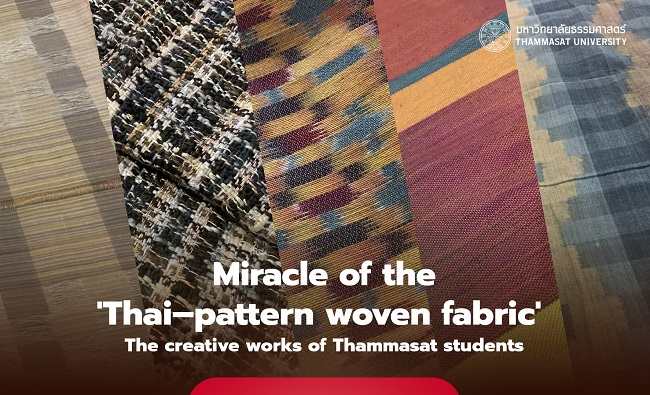
The beauty created by nature has been merged with the local cultural heritage of Thailand, initiating a powerful piece of work and full of stories that can be endlessly inherited.
The day the world was united, youth and the people of new generation project ideas to be connected to the world. “Thainess” is therefore interpreted in a different dimension, however maintain the essence and the foundation that transcends through time from era to era.
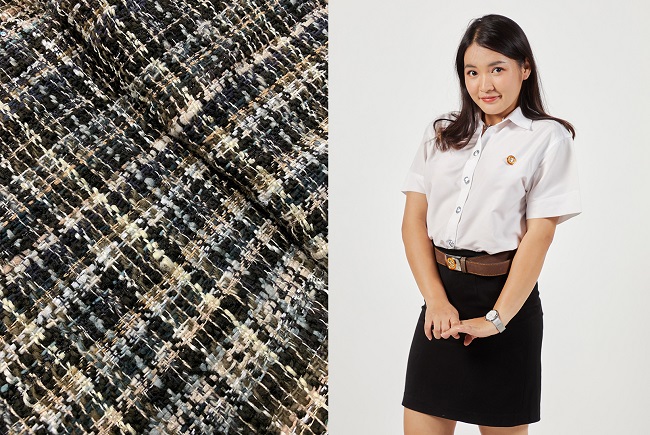
Similarly to the work “Chromatography”, a set of 33 shades of Thai pattern fabric, designed by “Fah”, Ms. Pemika Piahiang, a 4th year student from the Faculty of Fine and Applied Arts, Textile and Fashion Design Program of Thammasat University (TU) that has brought 'tresure in the soil', the existing asset of Thailand to be applied to modern way of thinking.
Until being able to win the "first prize" from the Cultural Textile Awards 2021 in the category of “Creative Textiles” under the project of developing cultural heritage of Thai fabrics to the world of the Department of Cultural Promotion, Ministry of Culture (DCP).
Fah said that Chromatography was a continuation of the thesis project from Thammasat University, a woven tweed fabric by raising the level of education to another level of detail in order to create fibers and design fabrics that are different, cutting-edge, starting from the fibers of each region that are considerably distinctive. For example, wool fibers from Mae Hong Son province, Eri silk fibers from Khon Kaen province, silk shell fibers from Phetchabun province, silk yarn and handmade cotton from Sisaket province.
The design concept of this woven fabric is from early experience in primary school that the teacher allowed her to conduct an experiment to separate colors by marking a point using black chemical pen, which there were red-blue-yellow colours spreading out. If studying art-based subjects, you would know that when these three colors are mixed together it will also become black.
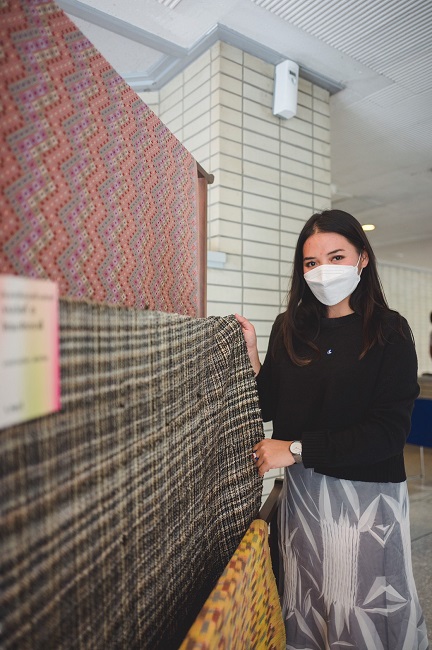
This was the original idea of dyeing the fibers black from natural dyes. Then, natural colors have been applied using color composition principles into the work, the woven fabric “chromatography” has approximately 33 color combinations.
For example, a pinkish brown color is obtained from coconut husk, red from shellac, blue from indigo, dark brown from the golden shower pods, yellowish-brown color from coffee grounds, yellow from garcinia barks, yellow from maclura cochinchinensis barks, and golden brown color from dried mangosteen peel, etc.
The award winner said that at first she wanted to study fashion as she wishs to design clothes, but in the first year, Thammasat University will teach the basics of both fashion and textiles. When learning, it was very enjoyable to make fibers, produce fabrics, which was even more fun than making patterns or fashion in general.
“It is as if you have to go back to the basics first, which is that, before making any clothes, we have to produce the fabric first. So, I feel like I love the steps that we started from the beginning. The important thing is the encouragement from the lecturers at the faculty, because every one of them cares about every student, therefore the more we enjoy what we learn,” said Ms. Pemika.
“In the future, I would continue to further develop bodies of work. I want everyone to see the importance as each piece of woven fabric has a value in itself. It depends on how further we can develop. Personally, I would like to develop my work to be more of an international level for people of all age to fall in love with this woven fabric or this particular pattern. I want them to feel that it is not outdated and can actually be used in daily life, and that I wish to have my own brand,” said Ms. Pemika.
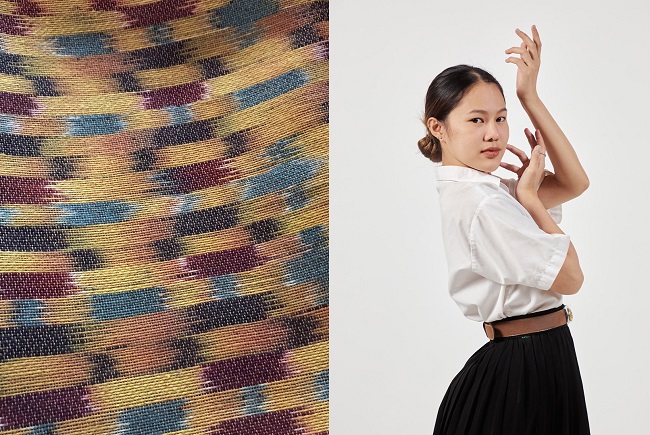
For "Jimmy", Ms. Supattra Klahaan, a student of the Faculty of Fine and Applied Arts from Thammasat, the author of the work "Efflorescence of Feminine" or the imaginary projection of a woman with a flower that is representing beauty, which won the Award Winner of the “Cotton” category from the contest under the same project, saying that the inspiration for the design was to be influenced by the colors from the Thai Textiles Book Spring/summer 2022.
For the distinctiveness of the work, it is fabric weaving with natural fibers from cotton, expressed through weaving with plexiglass pattern combined with ikat pattern technique. Vibrant color tones are used to represent purity, sweetness and beauty to create a new symbolic shape. The fibers are dyed from natural pigments such as blue from indigo, yellow from garcinia barks, pink from shellac and brown from golden shower pods.
“Knowledge gained from the classes is practical. Since the start of the working process on warp preparation, yarn reeling, patterning, natural dyeing techniques, weaving techniques, to communication methods, coordination, and most importantly, the design concept that has to take into account the user as a primary concern," said Jimmy.
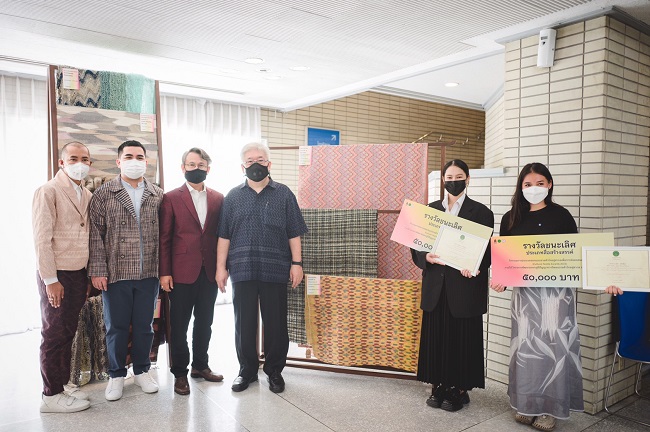
Ms. Supattra also said that she wants those who are interested or those with purchasing power to help support the work of villagers in all four regions of Thailand in order to create an even distribution of income. By buying one villagers' product, you will receive an item that indicates the arts and culture of that area, while the villagers will gain income leading to the morale and motivation to create the next piece in order to continue inheriting and preserving the existence of the Thai fabric of the areas.